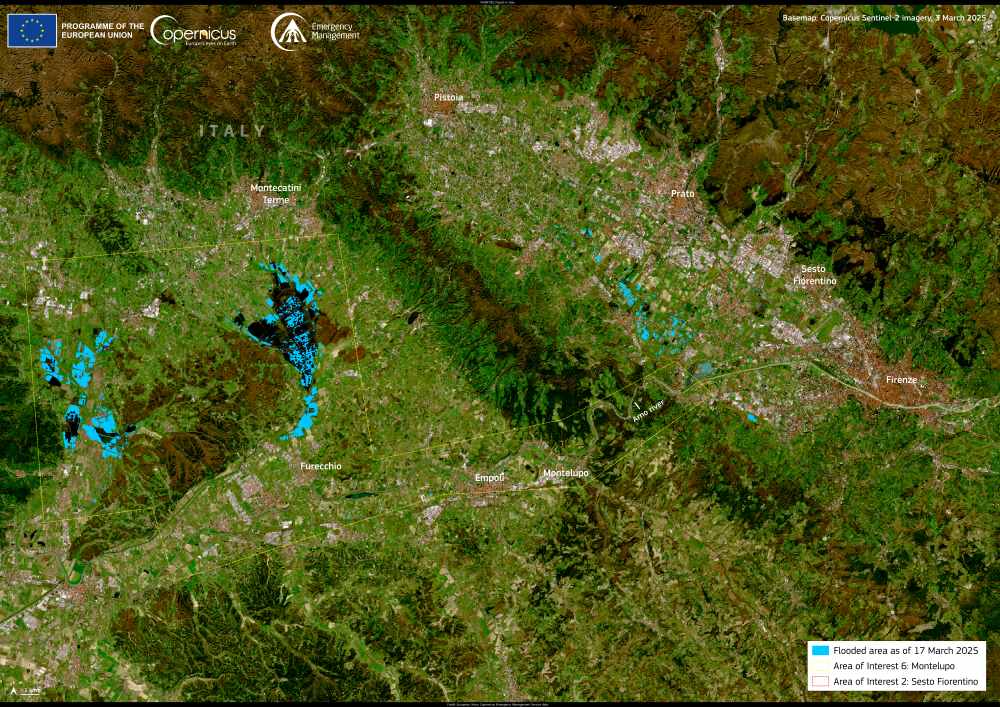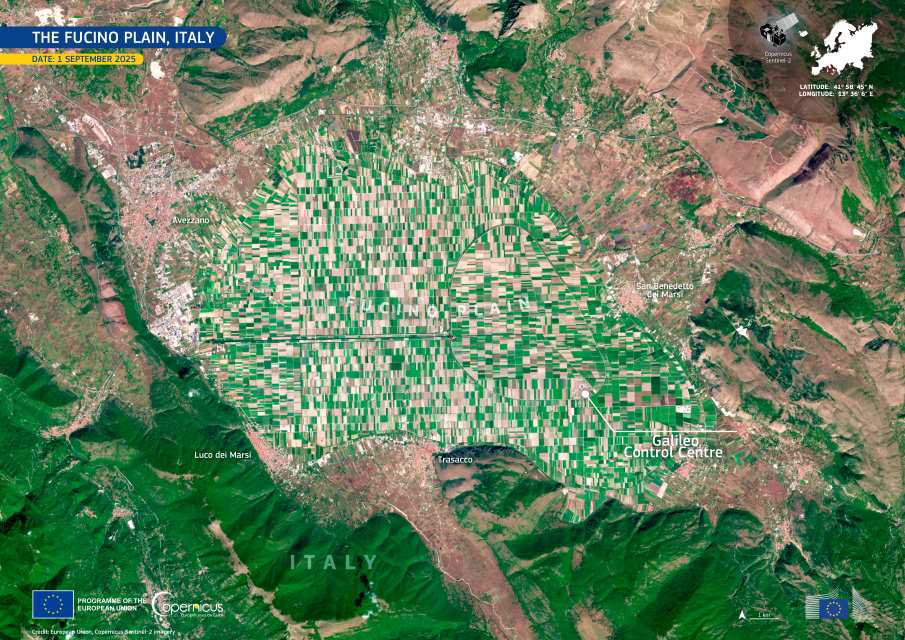Relentless rainfall on 14 March 2025 caused widespread flooding and landslides across northern and central Italy, with Emilia-Romagna and Tuscany among the hardest-hit regions. Rising waters forced evacuations, disrupted transportation, and led to school closures, while emergency crews worked to rescue stranded residents.
In response to the unfolding crisis, Italian authorities activated the Copernicus Emergency Management Service (CEMS) to provide emergency mapping of the flood extent and assess the damage. Using satellite data, CEMS produced visualisations that highlight the affected areas, with this image showing the extent of the flooding as of 17 March.

Open data from Copernicus Services and Sentinel satellites play a critical role in tracking severe weather events, helping authorities coordinate relief efforts and plan recovery measures. By providing accurate flood mapping, these satellite observations support emergency response teams working to protect communities in the wake of natural disasters.
Featured image credit: European Union, Copernicus Emergency Management Service Data



